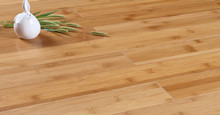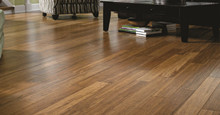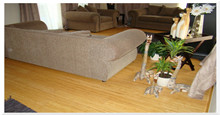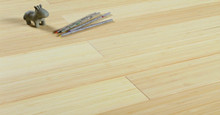Posted on 2024-10-29 16:18:11
For good reason, plywood is one of the most adaptable and popular building materials in the world. Plywood‘s strength, adaptability, and affordability have made it a mainstay in a variety of industries, including interior design and construction. But not all plywood is made equally. Different kinds of plywood are designed to satisfy particular needs, such as improved fire safety, moisture resistance, or aesthetic appeal, depending on the use.
The four main types of plywood—fire-retardant, ornamental, commercial, and marine—will be discussed in this blog, along with their special qualities, applications, and benefits. Knowing the differences between these plywood varieties will help you choose wisely for your upcoming project, whether you‘re a designer, builder, or do-it-yourselfer.
What‘s Plywood?
It‘s important to comprehend what plywood is and how it‘s created before delving into its different varieties. The thin layers, or "plies," of wood veneer that make up plywood are glued together to create a produced wood panel. Plywood‘s strength and resistance to shrinking, warping, and cracking are derived from the way these layers are usually organized, with each ply‘s grain running perpendicular to the one next to it.
Although plywood is available in a variety of thicknesses, widths, and grades, its fundamental idea is always the same: it is a robust, multi-layered material that, in many situations, is more resilient than solid wood. Now that we know what plywood is, let‘s examine the many varieties in more detail.
1. Fire-Retardant Plywood: Strength and Safety Come Together
What Is Plywood That Can Resist Fire?
Fire-retardant plywood, as the name implies, is designed to slow the rate of combustion and prevent flames from spreading. During the manufacturing process, this kind of plywood is usually treated with certain chemicals to improve its fire resistance. It greatly slows down the spread of the fire, allowing residents more time to flee and minimizing overall fire damage, even though it doesn‘t make the wood totally fireproof.
Chemical Treatment: Fire-retardant plywood is treated with chemicals that prevent combustion and delay the spread of flames by bonding with the wood fibers.
Compliance with Safety Standards: This kind of plywood needs to adhere to strict fire safety regulations, like those established by the NFPA or other regional building codes.
Sturdy and Adaptable: Fire-retardant plywood maintains the same structural properties as untreated plywood in spite of its chemical treatment.
Uses
In public and commercial structures where fire safety is a top concern, fire-retardant plywood is frequently utilized, including:
Sheathing for commercial buildings‘ walls and roofs
Interior paneling in places with a lot of people (such theaters, hospitals, and schools)
Mechanical system enclosures (such as HVAC and electrical rooms)
Without compromising structural integrity, builders can increase a building‘s fire safety by utilizing fire-retardant plywood during construction.
2. Decorative Plywood: Combining Style and Utility
Decorative Plywood: What Is It?
Decorative plywood is made especially to improve a room‘s visual attractiveness. Although all plywood serves a purpose, decorative plywood is particularly noteworthy for its appealing surface finish, which makes it perfect for interior design applications where aesthetics are just as crucial as functionality. It can have engineered designs and finishes, or it is frequently veneered with premium wood species like oak, walnut, or maple.
Important Features
Aesthetic Appeal: To accommodate various design trends, decorative plywood is available in a range of finishes, such as laminates, engineered textures, and natural wood veneers.
Variety of Grades: Decorative plywood comes in a range of premium and high-end grades as well as more reasonably priced choices, depending on the finish and intended usage.
Customizable: To blend in with a room‘s interior decor, decorative plywood can be painted, polished, or stained.
Uses
In both residential and commercial interiors, decorative plywood is frequently utilized, especially when aesthetic appeal is a top concern:
Furniture: Decorative plywood offers a stunning, long-lasting surface for tabletops, cabinets, and shelves.
Wall Paneling: Adding rich wood textures to a room with decorative plywood can create a cozy yet elegant ambiance.
Ceilings: To give a touch of elegance, ornamental plywood is occasionally used for ceiling treatments in high-end homes or business structures.
Decorative plywood is a great option for any project that calls for both form and function because of its unique blend of aesthetics and functionality.
3. Plywood for Commercial Use: The Industry Standard
Commercial Plywood: What Is It?
The most popular kind of plywood for interior and general construction purposes is commercial plywood. Frequently called "general-purpose plywood," this flexible, reasonably priced material comes in a variety of thicknesses and grades. This kind of plywood is perfect for situations where fire and moisture resistance are not the main concerns, even though it is not specially treated for these qualities.
Important Features
Cost-effective: When compared to other specialty varieties of plywood, commercial plywood is reasonably priced and widely accessible.
Versatile: It can be utilized for a wide range of tasks, including general construction and furniture making.
Available in Various Grades: Depending on the amount of plies and veneer quality, commercial plywood is available in a variety of grades.
Uses
The workhorse of the plywood family, commercial plywood finds employment in a wide range of applications, such as:
Furniture: Especially in places like the back panels of furniture or shelving where strength is needed but looks are not as crucial.
Paneling and Partitions: Temporary or permanent partitions in buildings can be made with commercial plywood.
Subflooring: This type of flooring is frequently used as a foundation for carpet, laminate, and hardwood.
Commercial plywood is a dependable, reasonably priced option for common construction requirements, even though it does not have the specific qualities of marine or fire-retardant plywood.
4. Marine Plywood: Water-Resilient Construction
Marine plywood: What is it?
High-quality, water-resistant plywood called marine plywood is made to withstand conditions where the wood will be exposed to damp or even submerged in water for prolonged periods of time. The plywood can tolerate continuous exposure to water without delaminating or rotting since it is composed of sturdy hardwood veneers and sealed with waterproof adhesive.
Important Features
Water-Resistant adhesive: Marine plywood is extremely resistant to water damage since it is bonded with waterproof adhesive.
Sturdy Hardwood Veneers: Marine plywood‘s strength and water resistance are further increased by the use of veneers, which are usually of a higher caliber than those found in regular plywood.
Void-Free Construction: To prevent water from leaking into the core and causing damage, marine plywood is built without any spaces or voids between the layers.
Uses
For any project that will be exposed to water or humid conditions, marine plywood is necessary:
Boat Building: Marine plywood is frequently utilized in the building of boats, docks, and other watercraft, as the name implies.
Outdoor Furniture: For outdoor furniture that must endure the weather, marine plywood is perfect.
Bathrooms and Kitchens: Where moisture is an issue, marine plywood is frequently utilized in residential construction for cabinets and subflooring in bathrooms and kitchens.
Marine plywood is a great option for any project that requires longevity in damp conditions because of its exceptional water resistance.
Final Thoughts: Selecting the Best Plywood for Your Project
There are several varieties of plywood, each designed to fulfill particular requirements. There is a type of plywood made to fit your needs, whether you‘re searching for ornamental plywood to improve interior aesthetics, commercial plywood for general construction, fire-retardant plywood to increase safety, or marine plywood for water-resistant applications.
Making better judgments and guaranteeing that your project is both aesthetically pleasing and structurally sound may be achieved by being aware of the distinctive qualities of each variety of plywood. Performance, durability, and style can all be perfectly balanced by choosing the correct kind of plywood.



